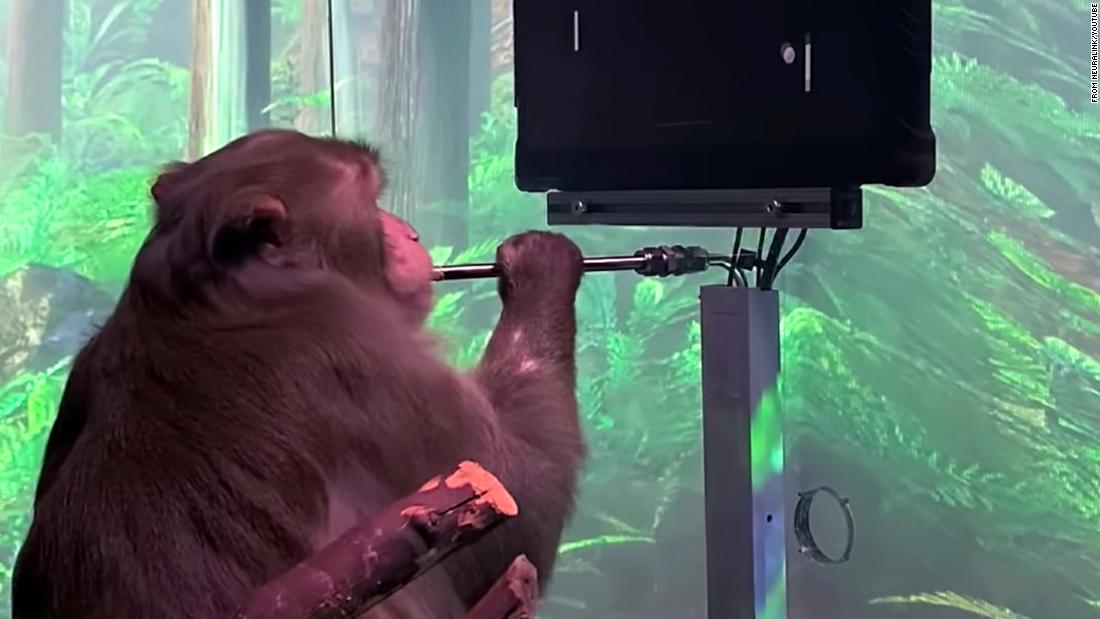
Neuralink is developing Bluetooth-enabled implantable chips that can communicate with computers via a small receiver, and has previously demonstrated the technology in pigs.
“He’s learned to interact with a computer to get a tasty banana smoothie that is delivered through a straw,” the narrator of the video says as Pager moves a cursor across the screen using a joystick.
Both Neuralink devices record the brain activity using more than 2,000 small electrodes implanted in Pager’s motor cortex, which controls hand and arm movements, according to the video.
Neuralink feeds information from monkey neurons into a decoder, which can then be used to predict the hand movements predicted by Pager and model the relationship between brain activity and joystick movements.
After a brief calibration period, the decoder output can be used to move the cursor instead of manipulating the joystick by Pager. The joystick then disconnects and Pager is shown moving the cursor only with his brain.
“Our goal is to allow a person with paralysis to use a computer or phone only with their brain activity,” explains the narrator, who explains that people would calibrate their decoder by imagining hand movements.
Musk also spoke Thursday about device plans on Twitter.
“Later versions will be able to divert signals from Neuralinks in the brain to Neuralinks in the body’s sensory motor / neuronal clusters, thus allowing, for example, paraplegics to walk again,” he added.